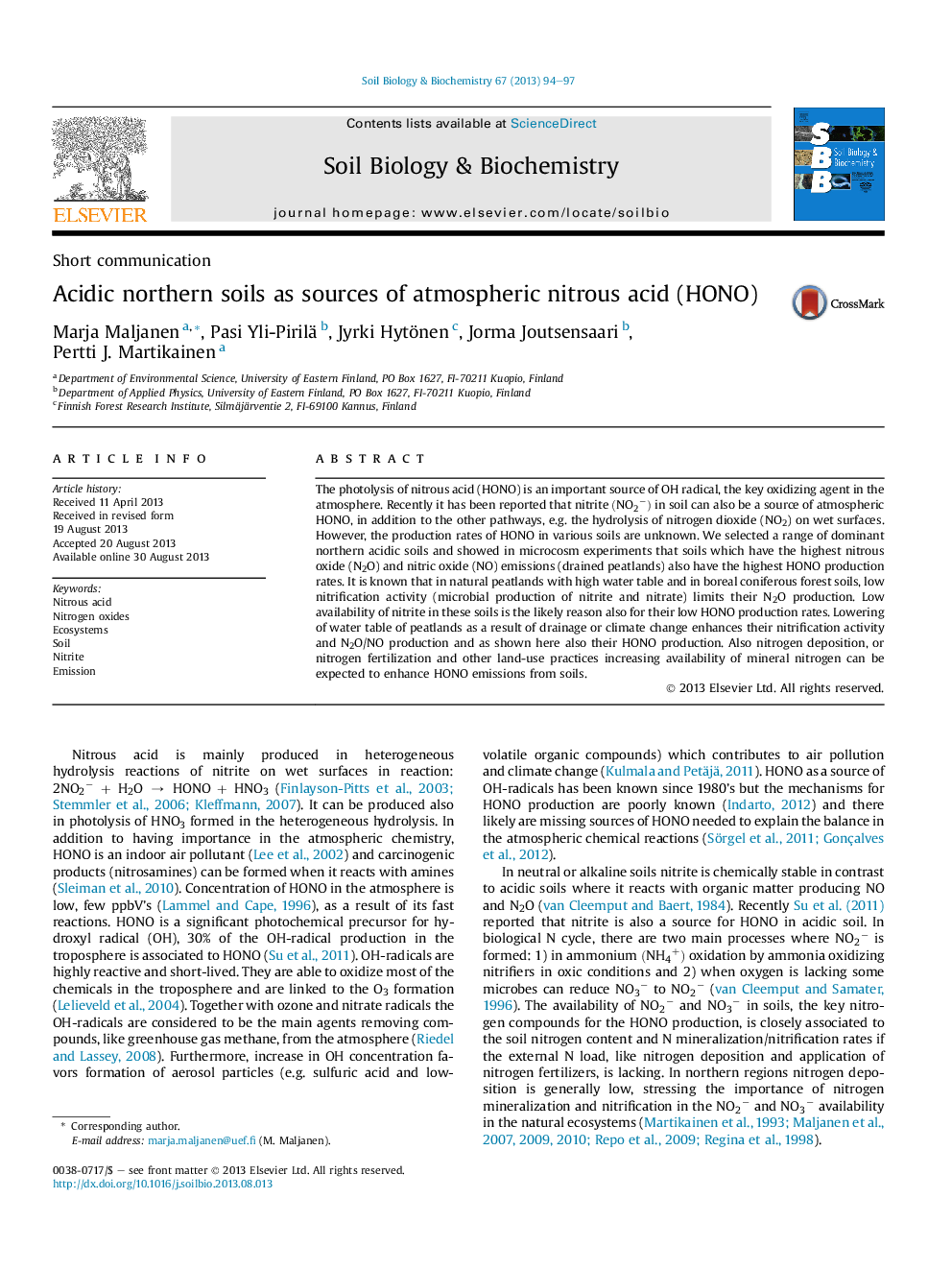| Article ID | Journal | Published Year | Pages | File Type |
|---|---|---|---|---|
| 8365042 | Soil Biology and Biochemistry | 2013 | 4 Pages |
Abstract
The photolysis of nitrous acid (HONO) is an important source of OH radical, the key oxidizing agent in the atmosphere. Recently it has been reported that nitrite (NO2â) in soil can also be a source of atmospheric HONO, in addition to the other pathways, e.g. the hydrolysis of nitrogen dioxide (NO2) on wet surfaces. However, the production rates of HONO in various soils are unknown. We selected a range of dominant northern acidic soils and showed in microcosm experiments that soils which have the highest nitrous oxide (N2O) and nitric oxide (NO) emissions (drained peatlands) also have the highest HONO production rates. It is known that in natural peatlands with high water table and in boreal coniferous forest soils, low nitrification activity (microbial production of nitrite and nitrate) limits their N2O production. Low availability of nitrite in these soils is the likely reason also for their low HONO production rates. Lowering of water table of peatlands as a result of drainage or climate change enhances their nitrification activity and N2O/NO production and as shown here also their HONO production. Also nitrogen deposition, or nitrogen fertilization and other land-use practices increasing availability of mineral nitrogen can be expected to enhance HONO emissions from soils.
Related Topics
Life Sciences
Agricultural and Biological Sciences
Soil Science
Authors
Marja Maljanen, Pasi Yli-Pirilä, Jyrki Hytönen, Jorma Joutsensaari, Pertti J. Martikainen,
